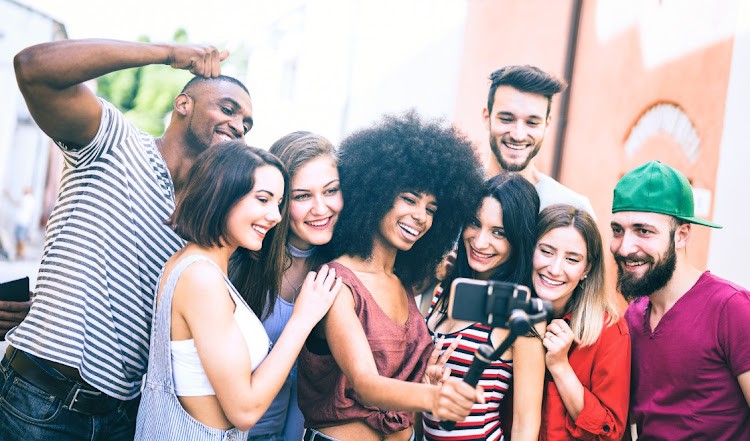Influencers Gone Wild: The Untamed World of Social Media Stars

The age of social media has brought about a new kind of celebrity: the influencer. These digital stars build their empires on platforms like Instagram, TikTok, and YouTube, sharing their lives, passions, and often controversial antics with millions of followers. While some influencers focus on inspiring and educating their audience, others have taken a more dramatic route, grabbing attention through wild behaviour and headline-worthy stunts. Welcome to the untamed world of Influencers Gone Wild.
The Rise of Influencer Culture
Social media has transformed how we consume content, shifting power away from traditional media and placing it into the hands of individuals. With a smartphone and a knack for storytelling, influencers have turned hobbies into full-time careers. But as this new breed of celebrity rose to prominence, so did the competition for followers and engagement.
Influencers quickly realized that “going viral” was the ticket to success. Viral moments often stem from outrageous behaviour or shocking revelations. This dynamic has created a culture where some influencers prioritize spectacle over substance, often pushing boundaries to keep their audience hooked. It’s no longer enough to post aesthetically pleasing photos or provide valuable advice; today’s influencers are expected to entertain, even if it means crossing the line. These moments, often dubbed Influencers Gone Wild, epitomize the extremes some go to for fame.
Crossing the Line: When Attention Becomes Addiction
The pressure to stay relevant on social media can lead influencers down a dangerous path. Many find themselves chasing viral fame, sometimes at the expense of their integrity and safety. From dangerous stunts to public meltdowns, the quest for clicks and likes can spiral out of control. The phenomenon of Influencers Gone Wild is a direct result of this relentless pursuit.
For example, some influencers have staged elaborate pranks that backfired spectacularly. Others have faced backlash for exploiting sensitive topics or violating social norms. These incidents often lead to public outrage, yet they also bring a surge of attention. In a way, controversy becomes a currency, incentivizing risky behaviour over responsible content creation. This Influencers Gone Wild trend highlights the darker side of the influencer economy.
This addiction to attention isn’t just about staying relevant; it’s also about financial survival. Many influencers rely on sponsorships and ad revenue, which are directly tied to their engagement metrics. When engagement dips, so does their income, creating a vicious cycle where controversy becomes a necessary evil. The Influencers Gone Wild moments often become their lifeline in a competitive space.
The Fine Line Between Authenticity and Performative Chaos
Authenticity is the buzzword in influencer culture. Followers crave realness, but how genuine can influencers be when their livelihood depends on maintaining a carefully curated image? The answer often lies in performative chaos an exaggerated version of their lives designed to captivate an audience. Influencers Gone Wild often blurs this line, presenting chaotic yet calculated glimpses of their lives.
Take, for instance, influencers who document their struggles in real-time. While this openness can foster genuine connections, it can also blur the line between sharing and oversharing. Some influencers have been accused of exploiting their hardships for clout, turning deeply personal moments into public spectacles. Such acts are often categorized under Influencers Gone Wild.
This phenomenon raises ethical questions about the balance between authenticity and entertainment. At what point does sharing become exploitation? And how do audiences distinguish between genuine vulnerability and calculated drama? These are questions that continue to shape the influencer landscape, especially as more examples of Influencers Gone Wild come to light.
When Public Backlash Becomes a Branding Strategy
Ironically, public backlash often works in an influencer’s favour. Scandals and controversies generate buzz, drawing more eyes to their content. Some influencers have even leaned into their “problematic” reputations, rebranding themselves as unapologetic provocateurs. The phenomenon of Influencers Gone Wild thrives on this dynamic.
This strategy isn’t without risks. While controversy can boost short-term engagement, it can also lead to long-term damage. Sponsors may pull out, platforms may impose bans, and audiences may grow tired of the drama. Yet, for many influencers, the gamble pays off. The cycle of outrage and redemption keeps them in the spotlight, proving that in the world of social media, even bad publicity can be good. The repeated instances of Influencers Gone Wild underline this paradox.
The Role of Platforms in the Madness
Social media platforms play a significant role in fueling this wild behaviour. Algorithms prioritize content that sparks engagement, often amplifying controversial or sensational posts. This dynamic creates a feedback loop where outrageous behaviour is rewarded with visibility, encouraging more of the same. As a result, Influencers Gone Wild moments often dominate feeds.
Platforms have faced criticism for their role in this ecosystem. Critics argue that their algorithms prioritize profit over responsibility, ignoring the social consequences of amplifying harmful content. While some platforms have taken steps to curb problematic behaviour, such as implementing stricter community guidelines, the effectiveness of these measures remains debatable. The prevalence of Influencers Gone Wild suggests there is still much work to be done.
The Audience’s Role in Shaping Influencer Behavior
Audiences are not passive observers; they are active participants in the influencer ecosystem. By liking, commenting, and sharing, followers signal what they want to see, indirectly shaping influencer behaviour. In many cases, the audience’s appetite for drama and spectacle fuels the Influencers Gone Wild phenomenon.
However, audiences also have the power to demand better. Movements like #CancelCulture and #Accountability have shown that followers can hold influencers accountable for their actions. While these movements are not without controversy, they highlight the evolving relationship between influencers and their audiences. If the audience rejects the culture of Influencers Gone Wild, it could lead to a more responsible social media landscape.
Navigating the Wild World of Influencers
For those aspiring to become influencers or simply looking to navigate this chaotic landscape, there are valuable lessons to be learned. Authenticity doesn’t have to mean chaos, and virality doesn’t have to come at the expense of integrity. By focusing on meaningful content and building genuine connections, influencers can thrive without resorting to wild antics. Avoiding the Influencers Gone Wild trap can lead to long-term success.
Audiences, too, have a role to play. By supporting creators who prioritize quality over controversy, followers can help shift the culture toward a healthier, more sustainable model. After all, the power dynamics of social media are not set in stone; the collective choices of creators and consumers alike shape them. Rejecting Influencers Gone Wild behaviour is a step in the right direction.
The Future of Influencer Culture
As the influencer industry continues to evolve, so too will the strategies and behaviours of its stars. While the Influencers Gone Wild phenomenon may never disappear entirely, there is hope for a more balanced future. With greater accountability and a shift in audience expectations, the wild world of influencers could become a little less untamed and a lot more inspiring. The lessons learned from Influencers Gone Wild episodes could pave the way for a new era of thoughtful and impactful content.
FAQs About Influencers Gone Wild
Q1: What does the term Influencers Gone Wild mean?
Influencers Gone Wild refers to moments when social media influencers engage in outrageous, controversial, or extreme behaviour to gain attention, often sparking public debate or backlash.
Q2: Why do influencers resort to wild or controversial actions?
Many influencers feel pressured to stand out in a competitive environment. Controversial actions often generate higher engagement, which translates to increased visibility and potential financial gains.
Q3: How can audiences encourage responsible influencer behaviour?
Audiences can support influencers who prioritize meaningful and ethical content. Engaging with positive and responsible creators sends a message that quality matters more than controversy.
Q4: What role do social media platforms play in promoting wild influencer behaviour?
Social media platforms often reward high engagement, regardless of the content’s nature. This can unintentionally encourage influencers to prioritize sensationalism over substance.
Q5: Can the Influencers Gone Wild trend be reversed?
Yes, by fostering accountability among influencers and shifting audience expectations toward responsible content, the culture of sensationalism can be mitigated, paving the way for a healthier social media environment.
You May Also Read
Drew Brees Makes His NBC Debut: Internet Amazed by His New Hair
Vanderpump Rules Tragedy: The Untold Stories Behind the Drama

